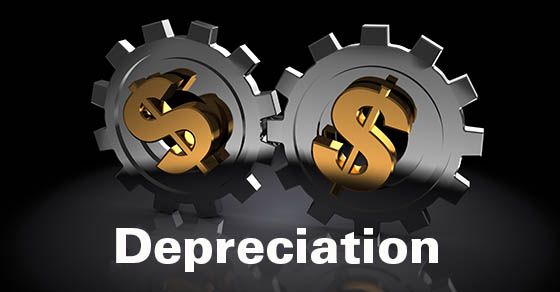Commercial real estate usually must be depreciated over 39 years. But certain real estate improvements — specifically, qualified improvement property (QIP) — are eligible for accelerated depreciation and can even be fully deducted immediately. While maximizing first-year depreciation is often beneficial, it’s not always the best tax move.
QIP defined
QIP includes any improvement to an interior portion of a nonresidential building that’s placed in service after the date the building was placed in service. But expenditures attributable to the enlargement of the building, any elevator or escalator, or the building’s internal structural framework don’t count as QIP.
QIP has a 15-year depreciation period. It’s also eligible for bonus depreciation and Section 179 expensing.
100% bonus depreciation
Additional first-year bonus depreciation is available for eligible assets, including QIP. The One Big Beautiful Bill Act (OBBBA), signed into law in July, increases bonus depreciation to 100% for assets acquired and placed in service after Jan. 19, 2025. It also makes 100% bonus depreciation permanent.
But be aware that bonus depreciation is only 40% for assets acquired Jan. 1, 2025, through Jan. 19, 2025, and placed in service any time in 2025. So, if your objective is to maximize first-year deductions on QIP acquired during that period, you’d claim the Sec. 179 deduction first. (See below.) If you max out on that, then you’d claim 40% first-year bonus depreciation.
In some cases, a business may not be eligible for bonus depreciation. Examples include real estate businesses that elect to deduct 100% of their business interest expense and dealerships with floor-plan financing — if they have average annual gross receipts exceeding $31 million for the previous three tax years.
Sec. 179 expensing
Similar to 100% bonus depreciation, Sec. 179 expensing allows you to immediately deduct (rather than depreciate over a number of years) the cost of purchasing eligible assets, including QIP. But the break is subject to annual dollar limits, which the OBBBA increases.
For qualifying assets placed in service in tax years beginning in 2025, the maximum allowable Section 179 depreciation deduction is $2.5 million (up from $1.25 million before the OBBBA). In addition, the break begins to phase out dollar-for-dollar when asset acquisitions for the year exceed $4 million (up from $3.13 million before the OBBBA). These amounts will continue to be annually adjusted for inflation after 2025.
Another restriction is that you can claim Sec. 179 expensing only to offset net income. The deduction can’t reduce net income below zero to create an overall business tax loss.
One advantage over bonus depreciation is that, for Sec. 179 expensing purposes, QIP also includes HVAC systems, nonresidential building roofs, fire protection and alarm systems, and security systems that are placed in service after the building is first placed in service.
Spreading out QIP depreciation
There are a few reasons why it may be more beneficial to spread out QIP depreciation over 15 years rather than claiming large first-year depreciation deductions:
Bonus depreciation can trigger the excess business loss rule. Although you can claim 100% first-year bonus depreciation even if it will create a tax loss, you could inadvertently trigger the excess business loss rule.
The rule limits deductions for current-year business losses incurred by noncorporate taxpayers: Such losses generally can offset income from other sources, such as salary, self-employment income, interest, dividends and capital gains, only up to the applicable limit. For 2025, the limit is $313,000 ($626,000 for a married joint filer).
As a result, your 100% first-year bonus depreciation deduction might effectively be limited by the excess business loss rule. However, any excess business loss is carried over to the following tax year and can then be deducted under the rules for net operating loss carryforwards.
Large first-year deductions can result in higher-taxed gain when QIP is sold. First-year bonus depreciation and Sec. 179 deductions claimed for QIP can create depreciation recapture that’s taxed at your ordinary income rate when the QIP is sold. Under rates made permanent by the OBBBA, the maximum individual rate on ordinary income is 37%. You may also owe the 3.8% net investment income tax (NIIT).
On the other hand, for QIP held for more than one year, gain attributable to straight-line depreciation is taxed at an individual federal rate of only 25%, plus the 3.8% NIIT if applicable.
Depreciation deductions may be worth more in the future. When you claim big first-year depreciation deductions for QIP, your depreciation deductions for future years are reduced accordingly. If you’re in a higher income tax bracket in the future or federal income tax rates go up, you’ll have effectively traded potentially more valuable future-year depreciation deductions for less-valuable first-year deductions.
Keep in mind that, while the OBBBA did “permanently” extend current rates, that only means they have no expiration date. Lawmakers could still increase rates in the future.
What’s best for you
Many factors must be considered before deciding whether to maximize QIP first-year depreciation deductions or spread out the deductions over multiple years. We can help you determine what’s best for your situation.





